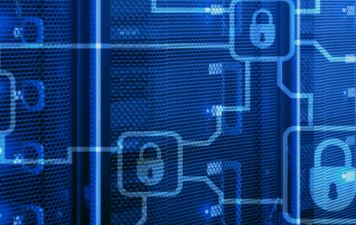The pace of digital transformation continues to accelerate, with public and private sector organisations embracing cloud, automation and even artificial intelligence. But once you go ‘all digital’, how can you protect your assets? Gareth Davies, CTI and Vulnerability Lead at Airbus Protect, explains why digital risk protection should be on your organisation’s radar.
When organisations embrace digital transformation, their attack surface increases – possibly exponentially. This means there are more opportunities for malicious threat actors to exploit, which in turn leads to increased cyber threats.
The term ‘attack surface’ refers to the entirety of an external network that’s vulnerable to potential cyber-attacks. This includes all systems that are publicly accessible over the internet.
Organisations should work hard to minimise their attack surface. That’s because attackers who gain entry to an external device can exfiltrate data and move laterally through the network, causing significant damage along the way. To combat this, organisations should make their attack surface as small as possible by minimising the quantity of publicly accessible systems, networks and data. This reduces potential entry points for threat actors. Think of it this way – it’s much easier to secure a one-bedroom apartment on the 20th floor of a high rise than it is a five-bedroom detached house with a huge number of windows and doors.
Enter digital risk protection
Digital risk protection – or DRP – is used to safeguard assets within the digital space.
A digital risk protection solution allows organisations to detect emerging threats before they present a serious problem. The solution works by tracking and analysing real-time threats over the surface, deep and dark web by utilising Indicators of Compromise (IoC) as well as Indicators of Attack (IoA). This allows organisations to analyse and categorise risks, and notify security analysts of impending or incoming attacks.
Why is digital risk protection important for the security of your organisation?
A successful cyber-attack can have huge financial ramifications, such as regulatory fines (due to stolen data), as well as interruptions to core services. In addition, there’s the risk of reputational damage. Unsurprisingly, having data exfiltrated from a network and potentially sold via underground criminal networks can impact customer trust!
What specific services are included in a digital risk protection solution?
Every solution differs slightly. But if your organisation does go down the digital risk protection route, this is broadly speaking what you can expect:
Brand monitoring – Checks for threats against your organisation or any of your customers, including cyber-attacks and brand impersonation.
Typosquatting protection – Monitoring for domains registered by malicious actors that are similar to your legitimate URLs. These are typically used by criminals to pose as your organisation or your customers.
Data leakage detection – Detecting whether any of your, or your customers’ data has been exposed publicly. This data can come from data breaches and might include leaked personal data, intellectual property or financial information.
Dark web monitoring – Many threat actors utilise the dark web to access marketplaces where malicious programs and stolen data are sold. Dark web monitoring can detect stolen data or leaked credentials that may be for sale within those marketplaces. This allows SOC teams to prevent potential unauthorised access to networks.
Want to know more about Airbus Protect’s digital risk protection solution? Check out our managed security services here.
 Cybersecurity
Cybersecurity 



